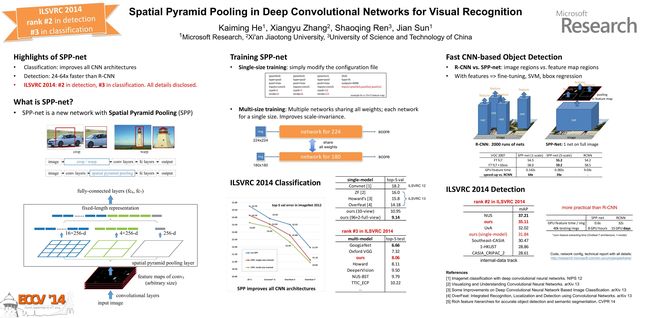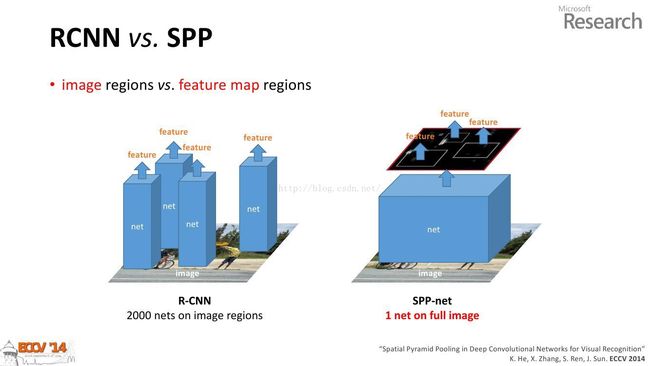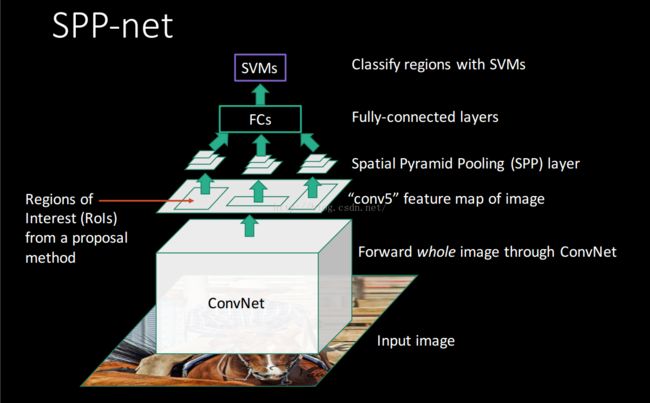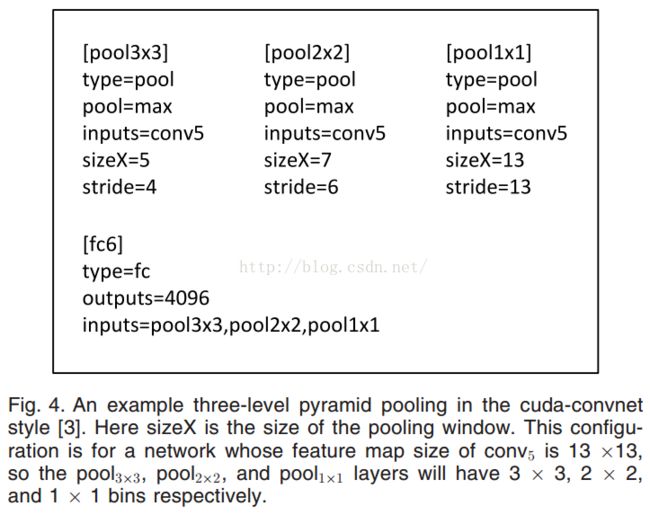- [论文阅读]Distilling Step-by-Step! Outperforming Larger Language Models with Less Training Data and Smal
0x211
论文阅读语言模型人工智能自然语言处理
中文译名:逐步蒸馏!以较少的训练数据和较小的模型规模超越较大的语言模型发布链接:http://arxiv.org/abs/2305.02301AcceptedtoFindingsofACL2023阅读原因:近期任务需要用到蒸馏操作,了解相关知识核心思想:改变视角。原来的视角:把LLMs视为噪声标签的来源。现在的视角:把LLMs视为能够推理的代理。方法好在哪?需要的数据量少,得到的结果好。文章的方法
- 【论文阅读】【IEEE TCYB 2023】Edge-Guided Recurrent Positioning Network forSalient Object Detection in Opt
引言任务:光学遥感图像中显著目标检测论文地址:Edge-GuidedRecurrentPositioningNetworkforSalientObjectDetectioninOpticalRemoteSensingImages|IEEEJournals&Magazine|IEEEXplore代码地址:前置知识一、摘要目前由于光学rsi中目标类型多样、目标尺度多样、目标方向众多以及背景杂乱,现有S
- 大模型服务的推理优化探索
半吊子全栈工匠
【引】有的事情别人不问时我们明白,一旦要我们解释它我们就不明白了,而这正是我们必须留心思索的东西。于是,开启了一次又一次的论文阅读之旅。开发并部署大模型应用肯定要考虑它们的服务成本。然而,钱并不是唯一的考虑因素,如果不能解决模型性能方面的问题,即使有很大的预算,大模型服务仍会受到影响。本文尝试讨论将LLM推理服务更改为高吞吐量引擎的挑战与应对方法。1.大模型服务面临的挑战大模型的能力令人惊叹,但其
- ER综述论文阅读-Emotion recognition in EEG signals using deep learning methods: A review
今天早睡了
情绪识别EmotionRecognition论文阅读深度学习人工智能
EmotionrecognitioninEEGsignalsusingdeeplearningmethods:AreviewQ1期刊,2023论文链接:https://d1wqtxts1xzle7.cloudfront.net/105887899/emotionreview-libre.pdf?1695460941=&response-content-disposition=inline%3B+f
- 【论文阅读】AdaCtrl: Towards Adaptive and Controllable Reasoning via Difficulty-Aware Budgeting
quintus0505
LLM论文阅读语言模型
AdaCtrl:TowardsAdaptiveandControllableReasoningviaDifficulty-AwareBudgeting3Method3.1长度触发标签作为控制接口(Length-TriggerTagsasControllingInterface)3.2冷启动微调(Cold-startfine-tuning)3.3难度感知的强化学习框架(Difficulty-awar
- 【论文阅读笔记】TimesURL: Self-supervised Contrastive Learning for Universal Time Series
少写代码少看论文多多睡觉
#论文阅读笔记论文阅读笔记
TimesURL:Self-supervisedContrastiveLearningforUniversalTimeSeriesRepresentationLearning摘要 学习适用于多种下游任务的通用时间序列表示,并指出这在实际应用中具有挑战性但也是有价值的。最近,研究人员尝试借鉴自监督对比学习(SSCL)在计算机视觉(CV)和自然语言处理(NLP)中的成功经验,以解决时间序列表示的问题。
- 【论文阅读】Decoupled Knowledge Distillation
Bosenya12
论文阅读
摘要:最先进的蒸馏方法主要基于从中间层蒸馏出深层特征,而logit蒸馏的重要性则被大大忽视了。为了提供研究logit蒸馏的新观点,我们将经典的KD损失重新表述为两部分,即目标类知识蒸馏(TCKD)和非目标类知识蒸馏(NCKD)。我们实证调查并证明了两部分的效果:TCKD传递了有关训练样本“困难”的知识,而NCKD是logit蒸馏起作用的突出原因。更重要的是,我们揭示了经典的KD损失是一个耦合公式,
- 【论文阅读】Transfer Learning for Automatic Modulation Recognition Using a Few Modulated Signal Samples
摘要:这封信提出了一种用于自动调制识别(AMR)的迁移学习模型,该模型仅具有少量调制信号样本。传输模型以音频信号UrbanSound8K作为源域进行训练,然后以一些调制信号样本为目标域进行微调。为了提高分类性能,信噪比(SNR)被用作一个功能来促进信号的分类。仿真结果表明,迁移模型在分类精度方面具有显著优势。这篇文章的核心内容是提出了一种基于迁移学习(TransferLearning)的自动调制识
- 【论文阅读】Meta-SE: A Meta-Learning Framework for Few-Shot Speech Enhancement
Bosenya12
论文阅读
这篇文章介绍了一个名为Meta-SE的元学习框架,专门用于少样本(few-shot)语音增强问题。文章的核心目标是解决在实际应用中,由于训练样本有限而导致传统深度神经网络(DNN)模型性能受限的问题。Meta-SE通过元学习的方法,利用先验的元知识快速适应新的任务和噪声类型,即使只有少量训练样本也能表现出色。背景知识与研究动机语音增强技术旨在从带噪语音信号中恢复目标语音,提升语音质量和可懂度。深度
- 【论文阅读】SASLN:小样本条件下机械故障诊断的信号增强自学习网络
SASLN:SignalsAugmentedSelf-TaughtLearningNetworksforMechanicalFaultDiagnosisUnderSmallSampleCondition本文介绍了一种名为SASLN(SignalsAugmentedSelf-TaughtLearningNetworks)的方法,专门用于在小样本条件下对风力发电机(WT)的发电机轴承故障进行诊断。该方
- 【论文阅读】SSCL-AMC: 一种基于动态增强和集成学习的自监督自动调制分类方法
SSCL-AMC:ASelf-supervisedAutomaticModulationClassificationMethodviaDynamicAugmentationandEnsembleLearning摘要:与传统的手工自动调制分类(AMC)方法相比,深度学习已经显示出有希望的结果,AMC作为信号检测和调制之间的中间步骤发挥着关键作用。然而,获取大规模标记数据仍然具有挑战性,因为数据质量和
- [论文阅读] 人工智能 + 软件工程 | 当 LLM 写代码时,它的 “思考过程” 靠谱吗?—— 揭秘 CoT 质量的那些事儿
张较瘦_
前沿技术论文阅读人工智能软件工程
当LLM写代码时,它的“思考过程”靠谱吗?——揭秘CoT质量的那些事儿论文标题:AreTheyAllGood?EvaluatingtheQualityofCoTsinLLM-basedCodeGenerationarXiv:2507.06980[pdf,html,other]AreTheyAllGood?EvaluatingtheQualityofCoTsinLLM-basedCodeGenera
- [论文阅读] 人工智能 + 软件工程 | 需求获取访谈中LLM生成跟进问题研究:来龙去脉与创新突破
需求获取访谈中LLM生成跟进问题研究:来龙去脉与创新突破论文标题:RequirementsElicitationFollow-UpQuestionGenerationarXiv:2507.02858RequirementsElicitationFollow-UpQuestionGenerationYuchenShen,AnmolSinghal,TravisBreauxComments:13page
- Prompt相关论文阅读(02)--Auto-CoT(2024-11-25)
zhilanguifang
论文promptengineering论文阅读笔记
论文阅读笔记2024-11-24~2024-11-25Auto-CoT:AutomaticChainofThoughtPromptinginLargeLanguageModels(ICLR2023)碎碎念:复现代码和笔记保存到gitee仓库上海交通大学的学生在亚马逊实习的时候的成果ICLR2023摘要:LLM能够通过生成中间推理步骤执行复杂的推理。提供这些步骤用于提示演示叫做思维链提示CoT。Co
- 【论文阅读】Dynamic Few-Shot Visual Learning without Forgetting
Bosenya12
论文阅读
系统概述如下:(a)一个基于卷积神经网络(ConvNet)的识别模型,该模型包含特征提取器和分类器;(b)一个少样本分类权重生成器。这两个组件都是在一组基础类别上训练的,我们为这些类别准备了大量训练数据。在测试阶段,权重生成器会接收少量新类别的训练数据以及基础类别的分类权重向量(分类器框内的绿色矩形),并为新类别生成相应的分类权重向量(分类器框内的蓝色矩形)。这样,卷积神经网络就能同时识别基础类别
- 【论文阅读】Few-Shot PPG Signal Generation via Guided Diffusion Models
Bosenya12
论文阅读
从少量样本数据选择到后处理的整体框架。首先,扩散模型在N样本数据集和指导下的训练。接着,模型生成一个增强的数据集,并进一步优化以提高保真度。最后,这些合成数据与少量样本训练数据集结合,用于基准模型的训练和评估。数据分布从最初的红色变为保真度增强的蓝色,这表明模型与真实数据更加吻合,如简化后的数据分布示意图所示。这篇文章的核心内容是介绍了一种名为BG-Diff(Bi-GuidedDiffusion)
- [论文阅读] 人工智能 | 读懂Meta-Fair:让LLM摆脱偏见的自动化测试新方法
张较瘦_
前沿技术论文阅读人工智能
读懂Meta-Fair:让LLM摆脱偏见的自动化测试新方法论文标题:Meta-Fair:AI-AssistedFairnessTestingofLargeLanguageModelsarXiv:2507.02533Meta-Fair:AI-AssistedFairnessTestingofLargeLanguageModelsMiguelRomero-Arjona,JoséA.Parejo,Jua
- 【LLM论文阅读】
一只齐刘海的猫
论文阅读
LLM论文阅读论文重点论文链接RopeRoFormer:EnhancedTransformerwithRotaryPositionEmbeddingRoPE论文阅读YarnUnderstandingYaRN:ExtendingContextWindowofLLMs论文YaRN笔记T5ExploringtheLimitsofTransferLearningwithaUnifiedText-to-Te
- Segment Anything in High Quality之SAM-HQ论文阅读
qq_41627642
深度学习论文阅读论文阅读
摘要最近的SegmentAnythingModel(SAM)在扩展分割模型规模方面取得了重大突破,具备强大的零样本能力和灵活的提示机制。尽管SAM在训练时使用了11亿个掩码,其掩码预测质量在许多情况下仍不理想,尤其是对于结构复杂的目标。我们提出了HQ-SAM,使SAM能够精确地分割任意目标,同时保留其原有的可提示设计、高效性和零样本泛化能力。我们的设计充分复用并保留了SAM预训练的模型权重,仅引入
- yolov算法详解_yolo 目标检测算法个人总结(yolov1)
CHAO JIANG
yolov算法详解
yolo目标检测算法个人总结目前yolo目标检测有两个版本,分别为v1和v2。因工作需要用yolo算法检测人物,所以这段时间重点看了这两篇论文,并实现了对应的tensorflow代码。这里记录下在论文阅读过程中的一些细节信息,留给自己,同时也希望各位能指出本人理解错误的地方,谢谢!一:yolov1关于yolov1算法的详解在网上已经非常多了,在这里我大概叙述下算法的流程,以及在开发过程中遇到的一些
- 《论文阅读》GPT-3是否会产生移情对话?一种新的情境示例选择方法和用于生成同理心对话的自动评估度量 ICCL 2022
365JHWZGo
情感对话论文阅读gpt-3共情回复上下文学习提示学习大模型
《论文阅读》GPT-3是否会产生移情对话?一种新的情境示例选择方法和用于生成同理心对话的自动评估度量ICCL2022前言贡献PromptIn-contextlearningSITSMEMOSITSM新的自动指标实验前言亲身阅读感受分享,细节画图解释,再也不用担心看不懂论文啦~无抄袭,无复制,纯手工敲击键盘~今天为大家带来的是《DoesGPT-3GenerateEmpatheticDialogues
- [论文阅读] 人工智能 + 软件工程 | 揭秘ChatGPT在软件开发问题解决中的有效性:一项实证研究
张较瘦_
前沿技术论文阅读人工智能软件工程
揭秘ChatGPT在软件开发问题解决中的有效性:一项实证研究论文:WhatMakesChatGPTEffectiveforSoftwareIssueResolution?AnEmpiricalStudyofDeveloper-ChatGPTConversationsinGitHubarXiv:2506.22390WhatMakesChatGPTEffectiveforSoftwareIssueRe
- [论文阅读] 人工智能 + 软件工程 | 代码注释不一致问题研究:从数据革新到端到端解决方案
张较瘦_
前沿技术论文阅读人工智能软件工程
代码注释不一致问题研究:从数据革新到端到端解决方案原文:CCISOLVER:End-to-EndDetectionandRepairofMethod-LevelCode-CommentInconsistencyarXiv:2506.20558CCISolver:End-to-EndDetectionandRepairofMethod-LevelCode-CommentInconsistencyRe
- Learning Fully Convolutional Networks for Iterative Non-blind Deconvolution论文阅读
青铜锁00
#退化论文阅读深度学习论文阅读图像处理
LearningFullyConvolutionalNetworksforIterativeNon-blindDeconvolution1.研究目标与实际问题1.1研究目标1.2实际意义2.创新方法与模型设计2.1核心框架:迭代式梯度域处理2.1.1模型架构2.2关键技术实现2.2.1梯度域去噪网络2.2.2解卷积模块(核心公式实现)2.2.3损失函数设计2.2.4超参数端到端学习2.3与传统方法
- KAIST数据集及使用
草莓奶忻
SLAM基础#SLAM数据集ubuntu
文章目录KAIST复杂城市数据集KAIST数据集转换为rosbag1.将.gz.tar文件解压到其文件夹中2.克隆并构建此存储库3.使用路径和所需主题编辑配置文件4.为每种传感器类型创建一个rosbag文件5.将所有bag合并为一个参考KAIST复杂城市数据集KAIST-Urban-数据集-论文阅读数据集下载:ComplexUrbanDataset复杂城市数据集KAIST数据集转换为rosbag1
- [论文阅读] 软件工程 | 需求工程中领域知识研究:系统映射与创新突破
张较瘦_
前沿技术论文阅读软件工程
需求工程中领域知识研究:系统映射与创新突破论文信息DomainKnowledgeinRequirementsEngineering:ASystematicMappingStudyarXiv:2506.20754DomainKnowledgeinRequirementsEngineering:ASystematicMappingStudyMarinaAraújo,JúliaAraújo,RomeuO
- 论文阅读:2025 arxiv Qwen3 Technical Report
https://arxiv.org/pdf/2505.09388https://www.doubao.com/chat/9918384373236738文章目录论文翻译Qwen3技术报告摘要1引言论文翻译Qwen3技术报告Qwen团队摘要在这项工作中,我们介绍了Qwen模型家族的最新版本Qwen3。Qwen3包含一系列大型语言模型(LLM),旨在提升性能、效率和多语言能力。Qwen3系列包括密集型
- [论文阅读] 软件工程 | 探索软件生态系统中的开发者体验关键因素
探索软件生态系统中的开发者体验关键因素:从研究到实践引文格式@article{Zacarias2025,title={ExploringDeveloperExperienceFactorsinSoftwareEcosystems},author={Zacarias,RodrigoOliveiraandAntunes,L{\'e}oCarvalhoRamosandBarros,M{\'a}rciod
- Fast Image Deconvolution using Hyper-Laplacian Priors论文阅读
青铜锁00
#退化论文阅读论文阅读图像处理
FastImageDeconvolutionusingHyper-LaplacianPriors1.论文的研究目标与实际意义2.论文的创新方法2.1核心框架:交替最小化(AlternatingMinimization)2.2x子问题:频域FFT加速2.3w子问题:高效求解的核心创新2.3.1问题形式2.3.2查找表法(LUT)2.3.3解析解法(特定α\alphaα)2.3.4通用α\alphaα
- [论文阅读] 人工智能 + 软件工程 | AI 与敏捷开发的破局之路:从挫败到成功的工作坊纪实
张较瘦_
前沿技术论文阅读人工智能软件工程
AI与敏捷开发的破局之路:从挫败到成功的工作坊纪实论文信息arXiv:2506.20159AIandAgileSoftwareDevelopment:FromFrustrationtoSuccess–XP2025WorkshopSummaryTomasHerda,VictoriaPichler,ZheyingZhang,PekkaAbrahamsson,GeirK.HanssenSubjects:
- Js函数返回值
_wy_
jsreturn
一、返回控制与函数结果,语法为:return 表达式;作用: 结束函数执行,返回调用函数,而且把表达式的值作为函数的结果 二、返回控制语法为:return;作用: 结束函数执行,返回调用函数,而且把undefined作为函数的结果 在大多数情况下,为事件处理函数返回false,可以防止默认的事件行为.例如,默认情况下点击一个<a>元素,页面会跳转到该元素href属性
- MySQL 的 char 与 varchar
bylijinnan
mysql
今天发现,create table 时,MySQL 4.1有时会把 char 自动转换成 varchar
测试举例:
CREATE TABLE `varcharLessThan4` (
`lastName` varchar(3)
) ;
mysql> desc varcharLessThan4;
+----------+---------+------+-
- Quartz——TriggerListener和JobListener
eksliang
TriggerListenerJobListenerquartz
转载请出自出处:http://eksliang.iteye.com/blog/2208624 一.概述
listener是一个监听器对象,用于监听scheduler中发生的事件,然后执行相应的操作;你可能已经猜到了,TriggerListeners接受与trigger相关的事件,JobListeners接受与jobs相关的事件。
二.JobListener监听器
j
- oracle层次查询
18289753290
oracle;层次查询;树查询
.oracle层次查询(connect by)
oracle的emp表中包含了一列mgr指出谁是雇员的经理,由于经理也是雇员,所以经理的信息也存储在emp表中。这样emp表就是一个自引用表,表中的mgr列是一个自引用列,它指向emp表中的empno列,mgr表示一个员工的管理者,
select empno,mgr,ename,sal from e
- 通过反射把map中的属性赋值到实体类bean对象中
酷的飞上天空
javaee泛型类型转换
使用过struts2后感觉最方便的就是这个框架能自动把表单的参数赋值到action里面的对象中
但现在主要使用Spring框架的MVC,虽然也有@ModelAttribute可以使用但是明显感觉不方便。
好吧,那就自己再造一个轮子吧。
原理都知道,就是利用反射进行字段的赋值,下面贴代码
主要类如下:
import java.lang.reflect.Field;
imp
- SAP HANA数据存储:传统硬盘的瓶颈问题
蓝儿唯美
HANA
SAPHANA平台有各种各样的应用场景,这也意味着客户的实施方法有许多种选择,关键是如何挑选最适合他们需求的实施方案。
在 《Implementing SAP HANA》这本书中,介绍了SAP平台在现实场景中的运作原理,并给出了实施建议和成功案例供参考。本系列文章节选自《Implementing SAP HANA》,介绍了行存储和列存储的各自特点,以及SAP HANA的数据存储方式如何提升空间压
- Java Socket 多线程实现文件传输
随便小屋
javasocket
高级操作系统作业,让用Socket实现文件传输,有些代码也是在网上找的,写的不好,如果大家能用就用上。
客户端类:
package edu.logic.client;
import java.io.BufferedInputStream;
import java.io.Buffered
- java初学者路径
aijuans
java
学习Java有没有什么捷径?要想学好Java,首先要知道Java的大致分类。自从Sun推出Java以来,就力图使之无所不包,所以Java发展到现在,按应用来分主要分为三大块:J2SE,J2ME和J2EE,这也就是Sun ONE(Open Net Environment)体系。J2SE就是Java2的标准版,主要用于桌面应用软件的编程;J2ME主要应用于嵌入是系统开发,如手机和PDA的编程;J2EE
- APP推广
aoyouzi
APP推广
一,免费篇
1,APP推荐类网站自主推荐
最美应用、酷安网、DEMO8、木蚂蚁发现频道等,如果产品独特新颖,还能获取最美应用的评测推荐。PS:推荐简单。只要产品有趣好玩,用户会自主分享传播。例如足迹APP在最美应用推荐一次,几天用户暴增将服务器击垮。
2,各大应用商店首发合作
老实盯着排期,多给应用市场官方负责人献殷勤。
3,论坛贴吧推广
百度知道,百度贴吧,猫扑论坛,天涯社区,豆瓣(
- JSP转发与重定向
百合不是茶
jspservletJava Webjsp转发
在servlet和jsp中我们经常需要请求,这时就需要用到转发和重定向;
转发包括;forward和include
例子;forwrad转发; 将请求装法给reg.html页面
关键代码;
req.getRequestDispatcher("reg.html
- web.xml之jsp-config
bijian1013
javaweb.xmlservletjsp-config
1.作用:主要用于设定JSP页面的相关配置。
2.常见定义:
<jsp-config>
<taglib>
<taglib-uri>URI(定义TLD文件的URI,JSP页面的tablib命令可以经由此URI获取到TLD文件)</tablib-uri>
<taglib-location>
TLD文件所在的位置
- JSF2.2 ViewScoped Using CDI
sunjing
CDIJSF 2.2ViewScoped
JSF 2.0 introduced annotation @ViewScoped; A bean annotated with this scope maintained its state as long as the user stays on the same view(reloads or navigation - no intervening views). One problem w
- 【分布式数据一致性二】Zookeeper数据读写一致性
bit1129
zookeeper
很多文档说Zookeeper是强一致性保证,事实不然。关于一致性模型请参考http://bit1129.iteye.com/blog/2155336
Zookeeper的数据同步协议
Zookeeper采用称为Quorum Based Protocol的数据同步协议。假如Zookeeper集群有N台Zookeeper服务器(N通常取奇数,3台能够满足数据可靠性同时
- Java开发笔记
白糖_
java开发
1、Map<key,value>的remove方法只能识别相同类型的key值
Map<Integer,String> map = new HashMap<Integer,String>();
map.put(1,"a");
map.put(2,"b");
map.put(3,"c"
- 图片黑色阴影
bozch
图片
.event{ padding:0; width:460px; min-width: 460px; border:0px solid #e4e4e4; height: 350px; min-heig
- 编程之美-饮料供货-动态规划
bylijinnan
动态规划
import java.util.Arrays;
import java.util.Random;
public class BeverageSupply {
/**
* 编程之美 饮料供货
* 设Opt(V’,i)表示从i到n-1种饮料中,总容量为V’的方案中,满意度之和的最大值。
* 那么递归式就应该是:Opt(V’,i)=max{ k * Hi+Op
- ajax大参数(大数据)提交性能分析
chenbowen00
WebAjax框架浏览器prototype
近期在项目中发现如下一个问题
项目中有个提交现场事件的功能,该功能主要是在web客户端保存现场数据(主要有截屏,终端日志等信息)然后提交到服务器上方便我们分析定位问题。客户在使用该功能的过程中反应点击提交后反应很慢,大概要等10到20秒的时间浏览器才能操作,期间页面不响应事件。
根据客户描述分析了下的代码流程,很简单,主要通过OCX控件截屏,在将前端的日志等文件使用OCX控件打包,在将之转换为
- [宇宙与天文]在太空采矿,在太空建造
comsci
我们在太空进行工业活动...但是不太可能把太空工业产品又运回到地面上进行加工,而一般是在哪里开采,就在哪里加工,太空的微重力环境,可能会使我们的工业产品的制造尺度非常巨大....
地球上制造的最大工业机器是超级油轮和航空母舰,再大些就会遇到困难了,但是在空间船坞中,制造的最大工业机器,可能就没
- ORACLE中CONSTRAINT的四对属性
daizj
oracleCONSTRAINT
ORACLE中CONSTRAINT的四对属性
summary:在data migrate时,某些表的约束总是困扰着我们,让我们的migratet举步维艰,如何利用约束本身的属性来处理这些问题呢?本文详细介绍了约束的四对属性: Deferrable/not deferrable, Deferred/immediate, enalbe/disable, validate/novalidate,以及如
- Gradle入门教程
dengkane
gradle
一、寻找gradle的历程
一开始的时候,我们只有一个工程,所有要用到的jar包都放到工程目录下面,时间长了,工程越来越大,使用到的jar包也越来越多,难以理解jar之间的依赖关系。再后来我们把旧的工程拆分到不同的工程里,靠ide来管理工程之间的依赖关系,各工程下的jar包依赖是杂乱的。一段时间后,我们发现用ide来管理项程很不方便,比如不方便脱离ide自动构建,于是我们写自己的ant脚本。再后
- C语言简单循环示例
dcj3sjt126com
c
# include <stdio.h>
int main(void)
{
int i;
int count = 0;
int sum = 0;
float avg;
for (i=1; i<=100; i++)
{
if (i%2==0)
{
count++;
sum += i;
}
}
avg
- presentModalViewController 的动画效果
dcj3sjt126com
controller
系统自带(四种效果):
presentModalViewController模态的动画效果设置:
[cpp]
view plain
copy
UIViewController *detailViewController = [[UIViewController al
- java 二分查找
shuizhaosi888
二分查找java二分查找
需求:在排好顺序的一串数字中,找到数字T
一般解法:从左到右扫描数据,其运行花费线性时间O(N)。然而这个算法并没有用到该表已经排序的事实。
/**
*
* @param array
* 顺序数组
* @param t
* 要查找对象
* @return
*/
public stati
- Spring Security(07)——缓存UserDetails
234390216
ehcache缓存Spring Security
Spring Security提供了一个实现了可以缓存UserDetails的UserDetailsService实现类,CachingUserDetailsService。该类的构造接收一个用于真正加载UserDetails的UserDetailsService实现类。当需要加载UserDetails时,其首先会从缓存中获取,如果缓存中没
- Dozer 深层次复制
jayluns
VOmavenpo
最近在做项目上遇到了一些小问题,因为架构在做设计的时候web前段展示用到了vo层,而在后台进行与数据库层操作的时候用到的是Po层。这样在业务层返回vo到控制层,每一次都需要从po-->转化到vo层,用到BeanUtils.copyProperties(source, target)只能复制简单的属性,因为实体类都配置了hibernate那些关联关系,所以它满足不了现在的需求,但后发现还有个很
- CSS规范整理(摘自懒人图库)
a409435341
htmlUIcss浏览器
刚没事闲着在网上瞎逛,找了一篇CSS规范整理,粗略看了一下后还蛮有一定的道理,并自问是否有这样的规范,这也是初入前端开发的人一个很好的规范吧。
一、文件规范
1、文件均归档至约定的目录中。
具体要求通过豆瓣的CSS规范进行讲解:
所有的CSS分为两大类:通用类和业务类。通用的CSS文件,放在如下目录中:
基本样式库 /css/core
- C++动态链接库创建与使用
你不认识的休道人
C++dll
一、创建动态链接库
1.新建工程test中选择”MFC [dll]”dll类型选择第二项"Regular DLL With MFC shared linked",完成
2.在test.h中添加
extern “C” 返回类型 _declspec(dllexport)函数名(参数列表);
3.在test.cpp中最后写
extern “C” 返回类型 _decls
- Android代码混淆之ProGuard
rensanning
ProGuard
Android应用的Java代码,通过反编译apk文件(dex2jar、apktool)很容易得到源代码,所以在release版本的apk中一定要混淆一下一些关键的Java源码。
ProGuard是一个开源的Java代码混淆器(obfuscation)。ADT r8开始它被默认集成到了Android SDK中。
官网:
http://proguard.sourceforge.net/
- 程序员在编程中遇到的奇葩弱智问题
tomcat_oracle
jquery编程ide
现在收集一下:
排名不分先后,按照发言顺序来的。
1、Jquery插件一个通用函数一直报错,尤其是很明显是存在的函数,很有可能就是你没有引入jquery。。。或者版本不对
2、调试半天没变化:不在同一个文件中调试。这个很可怕,我们很多时候会备份好几个项目,改完发现改错了。有个群友说的好: 在汤匙
- 解决maven-dependency-plugin (goals "copy-dependencies","unpack") is not supported
xp9802
dependency
解决办法:在plugins之前添加如下pluginManagement,二者前后顺序如下:
[html]
view plain
copy
<build>
<pluginManagement







